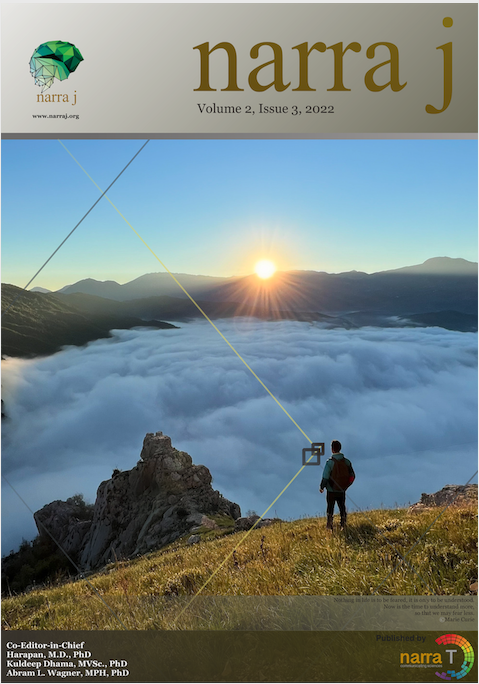Monkeypox: Immune response, vaccination and preventive efforts
DOI:
https://doi.org/10.52225/narra.v2i3.90Keywords:
Monkeypox virus, MPXV, outbreak, zoonosis, emerging viral infectious diseaseAbstract
Infectious threats to humans are continuously emerging. The 2022 worldwide monkeypox outbreak is the latest of these threats with the virus rapidly spreading to 106 countries by the end of September 2022. The burden of the ongoing monkeypox outbreak is manifested by 68,000 cumulative confirmed cases and 26 deaths. Although monkeypox is usually a self-limited disease, patients can suffer from extremely painful skin lesions and complications can occur with reported mortalities. The antigenic similarity between the smallpox virus (variola virus) and monkeypox virus can be utilized to prevent monkeypox using smallpox vaccines; treatment is also based on antivirals initially designed to treat smallpox. However, further studies are needed to fully decipher the immune response to monkeypox virus and the immune evasion mechanisms. In this review we provide an up-to-date discussion of the current state of knowledge regarding monkeypox virus with a special focus on innate immune response, immune evasion mechanisms and vaccination against the virus.
Downloads
Downloads
How to Cite
Issue
Section
Citations
License
Copyright (c) 2022 Youdiil Ophinni, Andri Frediansyah, Salin Sirinam, Dewi Megawati, Ana M. Stoian, Seyi S. Enitan, Richard Y. Akele, Ranjit Sah, Krit Pongpirul, Ziad Abdeen, Sevda Aghayeva, Aamer Ikram, Yohannes Kebede, Uwe Wollina, Kannan Subbaram, Ai Koyanagi, Abdulwahed Al Serouri, H. Blaise Nguendo-Yongsi, Jeffrey Edwards, Dina E. Sallam, Yousef Khader, Sandro G. Viveiros-Rosa, Ziad A. Memish, Mehrdad Amir-Behghadami, Sandro Vento, Marius Rademaker, Malik Sallam

This work is licensed under a Creative Commons Attribution-NonCommercial 4.0 International License.



